Flower Meanings
Marigolds
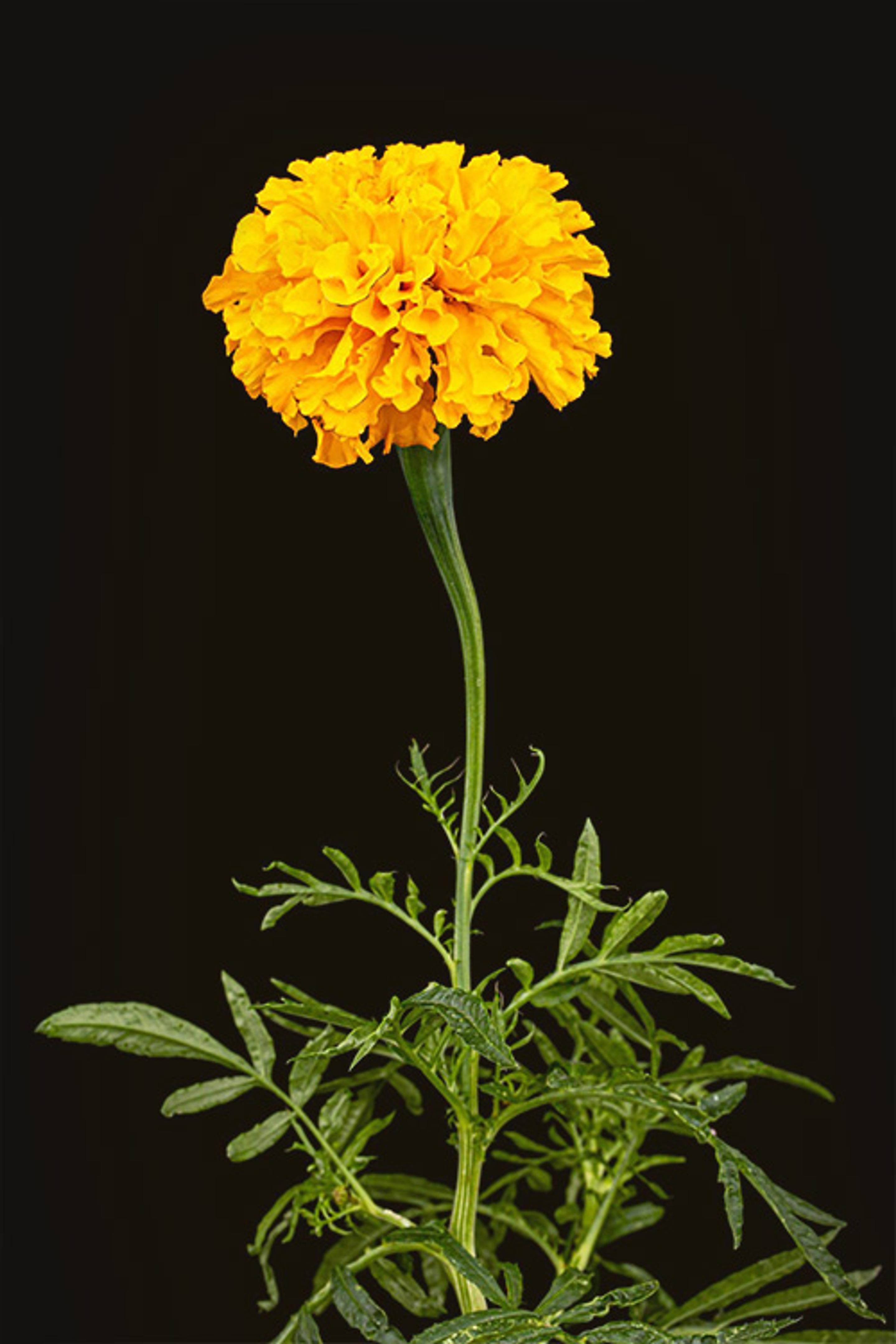

The Meaning of Marigolds
Does “Mary’s Gold” sound a bit familiar to you? Sounds a lot like “marigold,” huh? Well, that’s because the marigold is said to have derived its name from “Mary’s Gold!” Early Christians had a tradition of placing flowers on Mary’s altar as an offering instead of coins. Marigolds are often used in festivities honoring Mary, even today.
The Victorians related these blooms to a desire for riches, as many legends, such as the one above, compared the marigold to Mary’s gold (they do kind of look like coins!)
In fact, the use of marigolds as a symbol occurred in many cultures like Hindu, Buddhist, and Aztec. Marigolds were often linked to the powerful strength of the sun and represent power, strength, and light that lives inside of a person.
The marigold is very often associated with the sun. Doesn’t seem too surprising, given the looks of this bloom! Bright, round, and (usually) a vibrant gold color! The flowers are open right up when the sun comes out, giving it the nickname “herb of the sun,” comparing it to the passion and creativity that the sun’s rays can activate. [1]
The marigold has also come to symbolize a feeling of despaired love. If someone has lost someone they love, whether it be by death or a broken relationship. It could also be a symbol of rejection from someone you love. Be careful gifting marigolds to a loved one! It could send the wrong message!
They also represent remembering the dead. Bringing marigolds to a gravesite is incredibly common and is done in many cultures of the world today.
Marigold Color Meanings
There are many flowers that have just one meaning, but the marigold has a few different meanings depending on its color… even though the colors are quite similar.
- Yellow: Positive feelings, happiness, and joy.
- Orange-Red: Love, passion, and romance.
- Orange: Positive energy and strong emotions. [2]
October Flower of the Month
On the hunt for the perfect gift for that special October birthday in your life? Look no further!
What Do Marigold's Smell Like?
Marigolds have an overpowering musky smell, similar to that of wet hay or straw. [7]
So essentially, they smell of autumn!
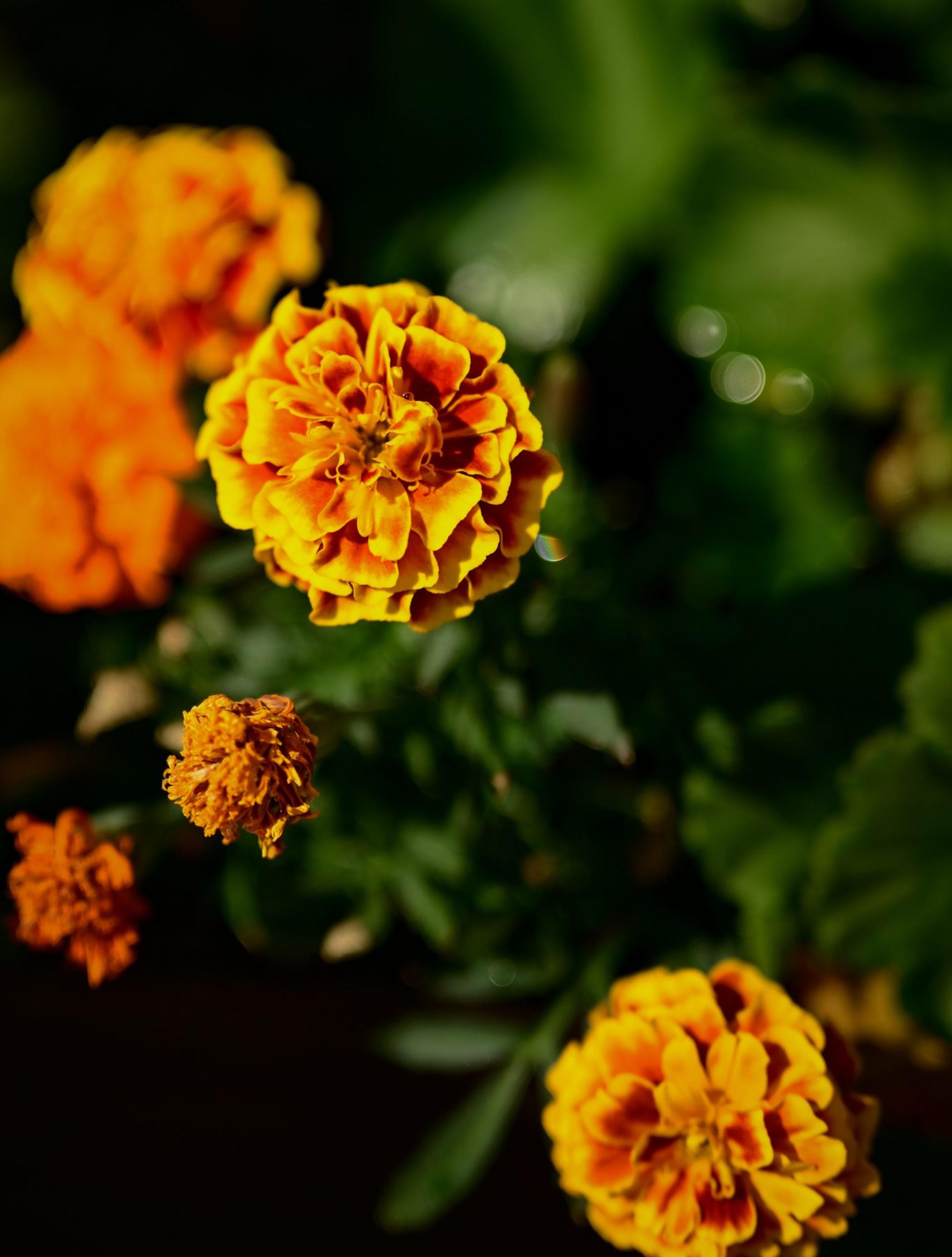
"To strew thy green with flowers; the yellows, blues, The purple violets, and marigolds"
William Shakespeare
The History of the Marigold
Marigolds are native to the New World, sacred flowers of the Aztecs, have journeyed across the Atlantic Ocean twice to travel 3,000 miles north of their original place of origin. A testimony to their hardy nature, the marigold is one of the most popular annuals grown in North America today.
The earliest known marigold was discovered by the Aztecs. They believed these magnificent blooms to possess magical, religious, and medicinal properties. The first recorded use of the marigold is in the De La Crus-Badiano Aztec Herbal of 1552. The Herbal records the use of these blooms for the treatment of hiccups (what!? ), being struck by lightning, or “for one who wishes to cross a river or body of water safely.” Definitely going to be checking out that hiccup remedy…
The Aztecs bred their marigolds for huge blooms (the bigger, the better, right?). It is said that in the 1500s, the native marigold’s seeds were taken from the Aztecs by early Spanish explorers and brought to Spain. Marigolds were then cultivated in Spain and grown in monastery gardens throughout the country. From Spain, marigold seeds were then transported to France and northern Africa. The taller marigolds, now called African-American marigolds, became naturalized in North Africa.
In Mexico and Latin America, the marigold is often used to decorate household altars to celebrate All Saints Day and All Souls Day. Flower heads will be scattered on the graves of loved ones.
These blooms are also used in Hindu religious ceremonies as garlands to decorate village gods during the harvest festival.
Marigolds were finally introduced to American gardeners several hundred years after their initial journey. These blooms were just one of many plants that were shipped to the young country shortly after the Revolutionary War.
In 1915, David Burpee believed the marigold to hold a lot of promise and decided to feature them in his catalog and fund research on the plant. Since the 1920s, marigold breeding has developed hundreds of new varieties: odorless, white, hybrids, and triploids, and still reigns as one of the most popular garden flowers today! [3]
DID YOU KNOW - Marigold Fun Fact
There are 56 total species of marigolds & it’s the birth flower for all of you October babies out there! [4]

How to Grow Marigolds
Now it’s time to get planting!
There is no annual that’s more cheerful, hardy, and easy to grow than the marigold.
Marigolds tend to have daisy or carnation- like flower heads that either grow singularly or in clusters.
The best time to plant marigolds is anytime from spring to midsummer (tall African marigolds should be planted in the spring after danger of frost has passed).
Sow your marigold seeds directly into the garden once the soil is warm. You can also start your seeds inside, but they germinate very easily outside, so there is really no advantage to doing so. Your blooms will sprout within a week in warm weather and will usually begin to bloom after about 8 weeks.
Marigolds THRIVE in full sun and can withstand pretty hot summers. The African and signet marigolds are drought tolerant, while French marigolds are more tolerant of wetter conditions.
If you plant your blooms in a cool, shady area, they could be exposed to too much moisture and become prone to mildew, leading to a subpar blooming season.
Marigolds will grow in just about any soil but will do best in moderately fertile, well-draining soil.
Before planting, moisten your soil, then sow the seeds 1 inch apart and 1 inch deep.
Once they’ve established themselves, pinch off the tops of the plants to encourage bushier growth. This will keep your marigolds from becoming too leggy and promote more blooms! (YES!).
When watering, allow the soil to dry out a bit, then water well and repeat!
Pro Tip: Be sure to water them from the plant’s base, as excess water on the leaves can lead to mildew. [5]
Go forth and sow on!
DID YOU KNOW - Marigold Fun Fact
The marigolds natural habitats include shores, ponds, springs, quiet waters in streams, wetlands, ditches, wet meadows, and swamps. [4]
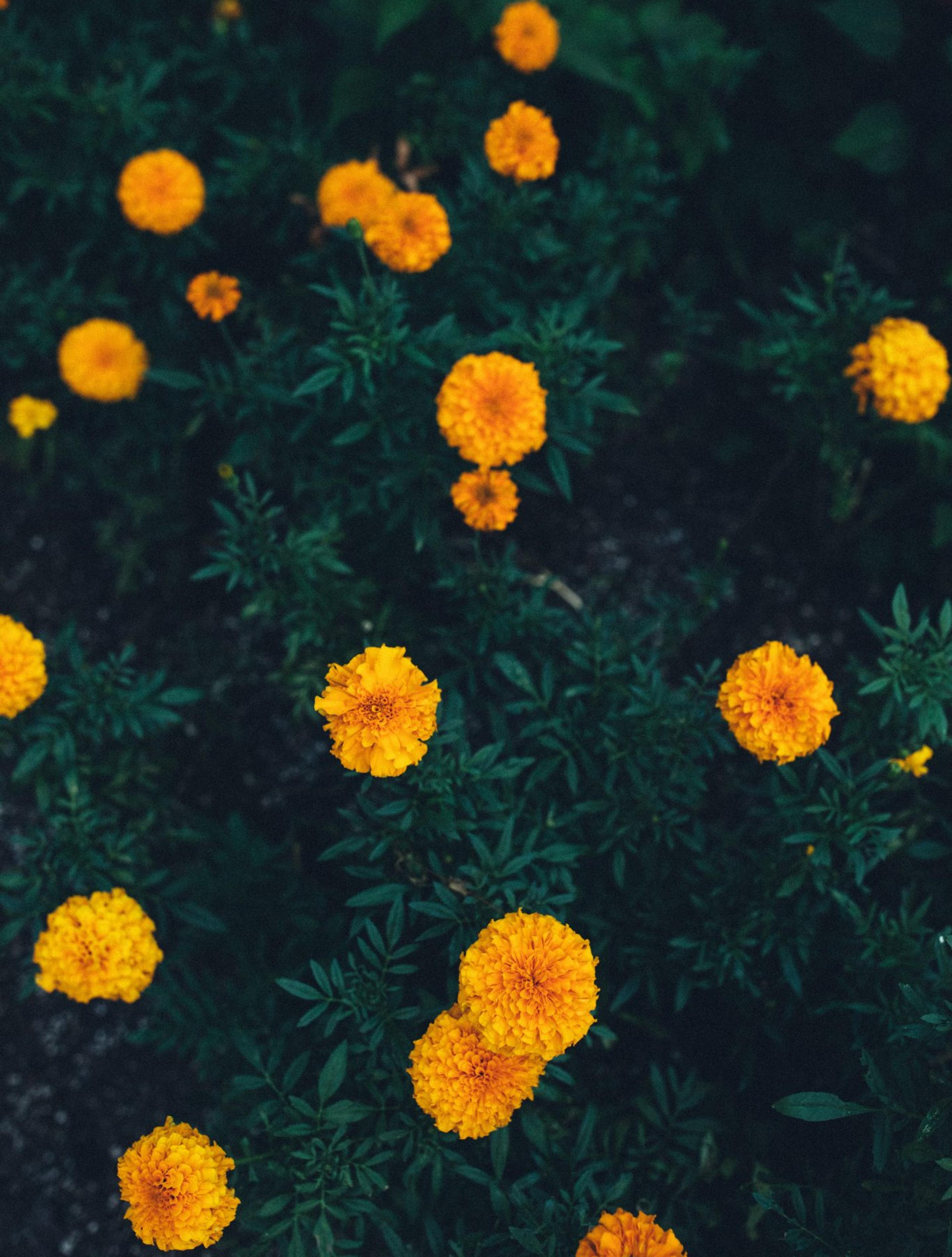
How to Care for Marigolds
Whether you’re purchasing your marigolds from a local florist or cutting a few stems from the garden, here are some care tips to ensure your blooms last indoors for as long as possible!
According to Hillsboro Florist, the best time to purchase or cut your marigolds is during the blooming stage, when the flower has opened, but before the bottom petals show any signs of wilting or sagging.
Once you’ve got your stems, cut off about ½ inch from the bottom of the stem. Strip off all of the foliage from the stems. Marigolds tend to have a strong odor to them; however, this odor actually comes from the foliage. So to avoid that strong scent, strip off all of the foliage from the stem, but not from the flower head itself. Removing the leaves will also remove the smell! Voila!
Pro Tip: Be sure to wash your hands immediately after handling the foliage to avoid stinky hands!
Next, place your stems in a mixture of warm water and preservative. Allow them to harden in a cool, dark place with moderate refrigeration (if you have it!).
Be sure to check your marigold’s water supply daily and replenish with fresh water and preservatives as necessary.
Keep them away from any areas of draft or excessive heat, as this could cause early wilting, which we definitely don’t want! Keep them away from air vents, fans, radiators, television sets, and windows that tend to get full sun. [6]
Most importantly, enjoy them!
When to Send Marigolds as a Gift
Give marigolds as a gift to a lost love, to celebrate someone who has passed on, or to someone who has brought light, abundance, and sunshine to your life!

References:
- 1 - Aunty Flo
- 2 - Flower Meanings
- 3 - Burpee
- 4 - Just Fun Facts
- 5 - Almanac
- 6 - Hortscans.edu
- 7 - LA Times
Flower Meanings — keep discovering

Lily of the Valley
A personal favorite of Audrey Hepburn and featured in many royal weddings – this delicate woodland plant is famous for its sweetly scented, bell-shaped white flowers. Native throughout the cool temperate Northern Hemisphere in Asia and Europe, this pendant bloom has surely made its mark in history.
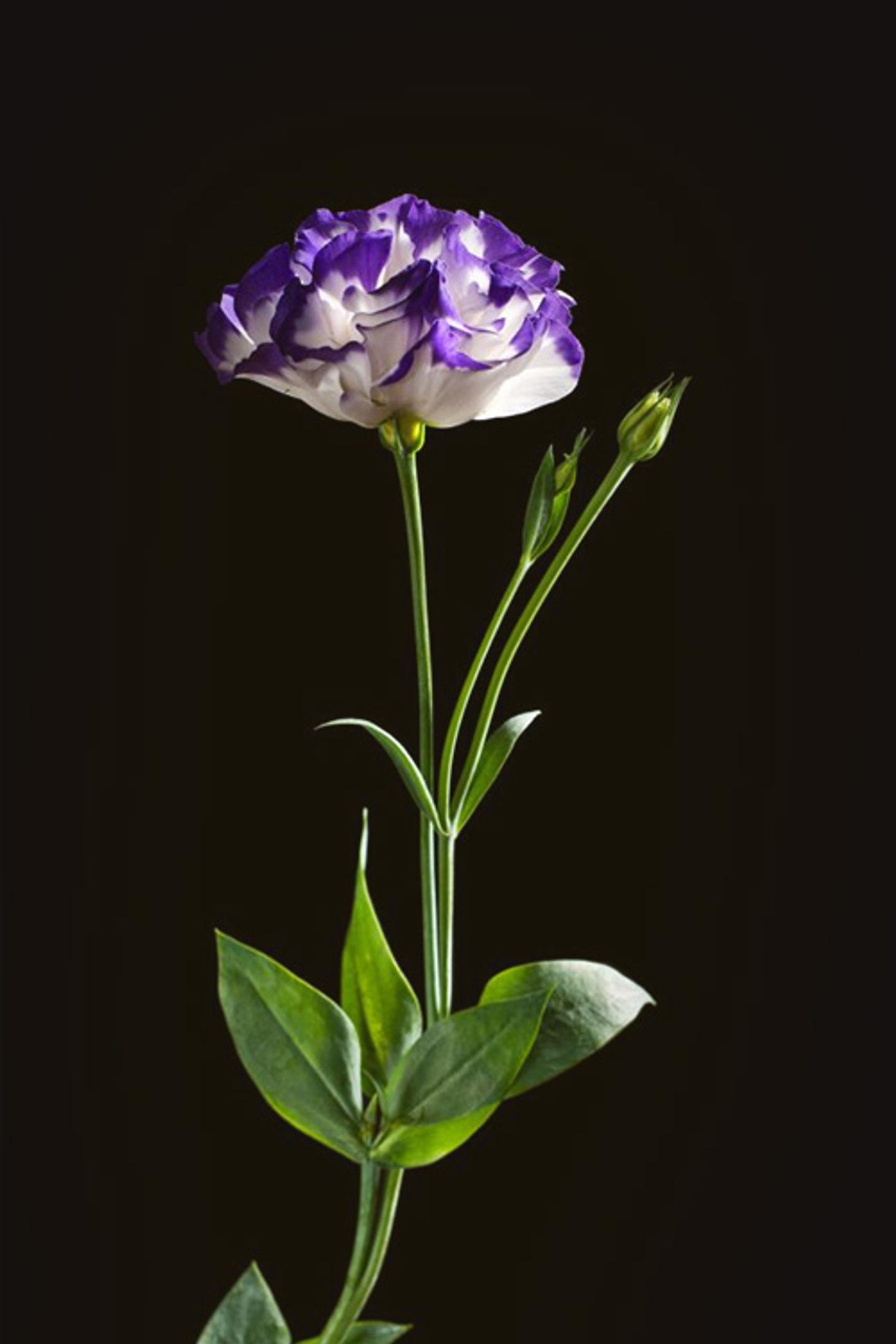
Lisianthus
Sometimes the simplest of things can become the most elegant…
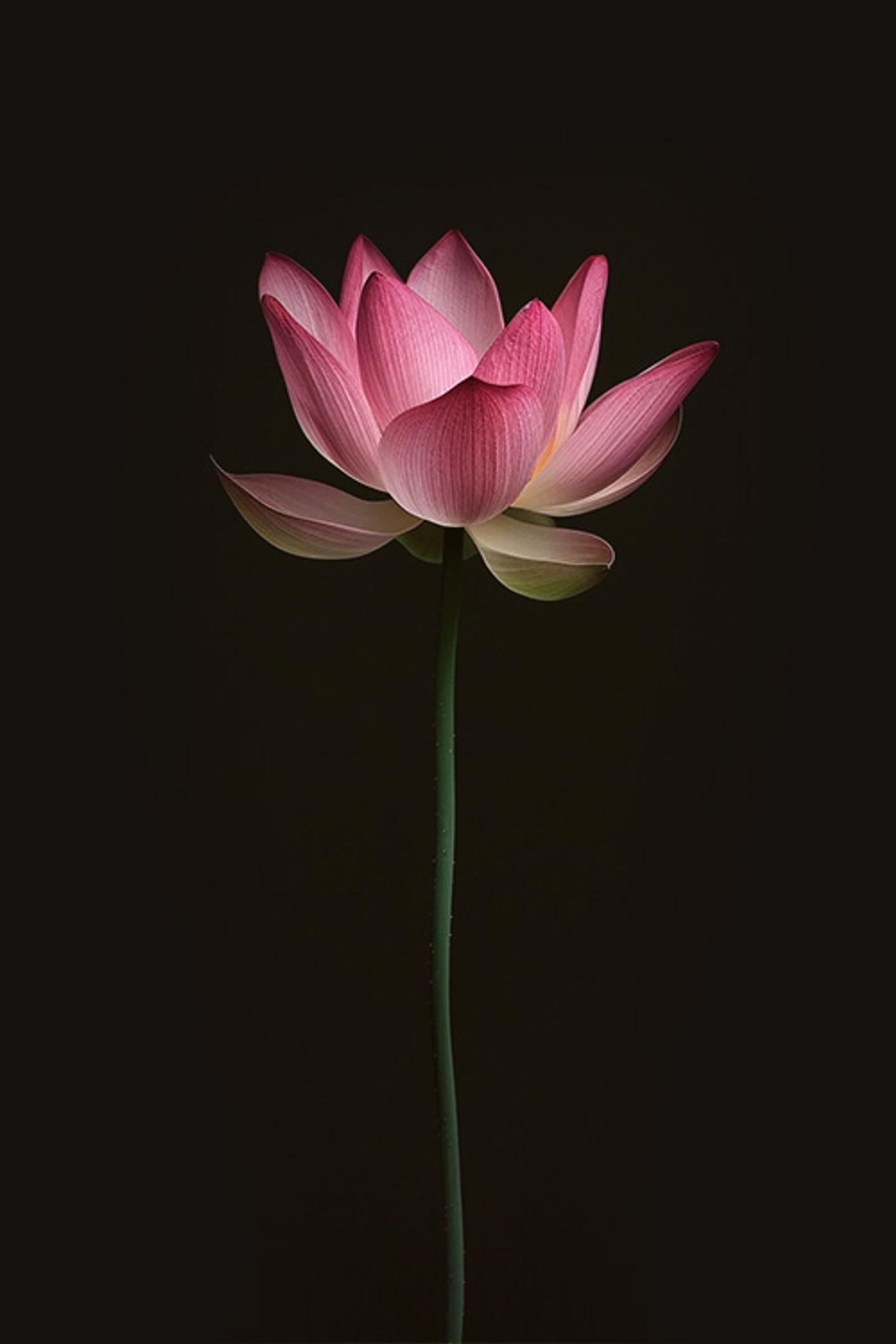
Lotus
The Nelumbo nucifera, also known as the sacred lotus, water lily, or just plain old lotus—is considered one of the most sacred blooms in our world’s history.
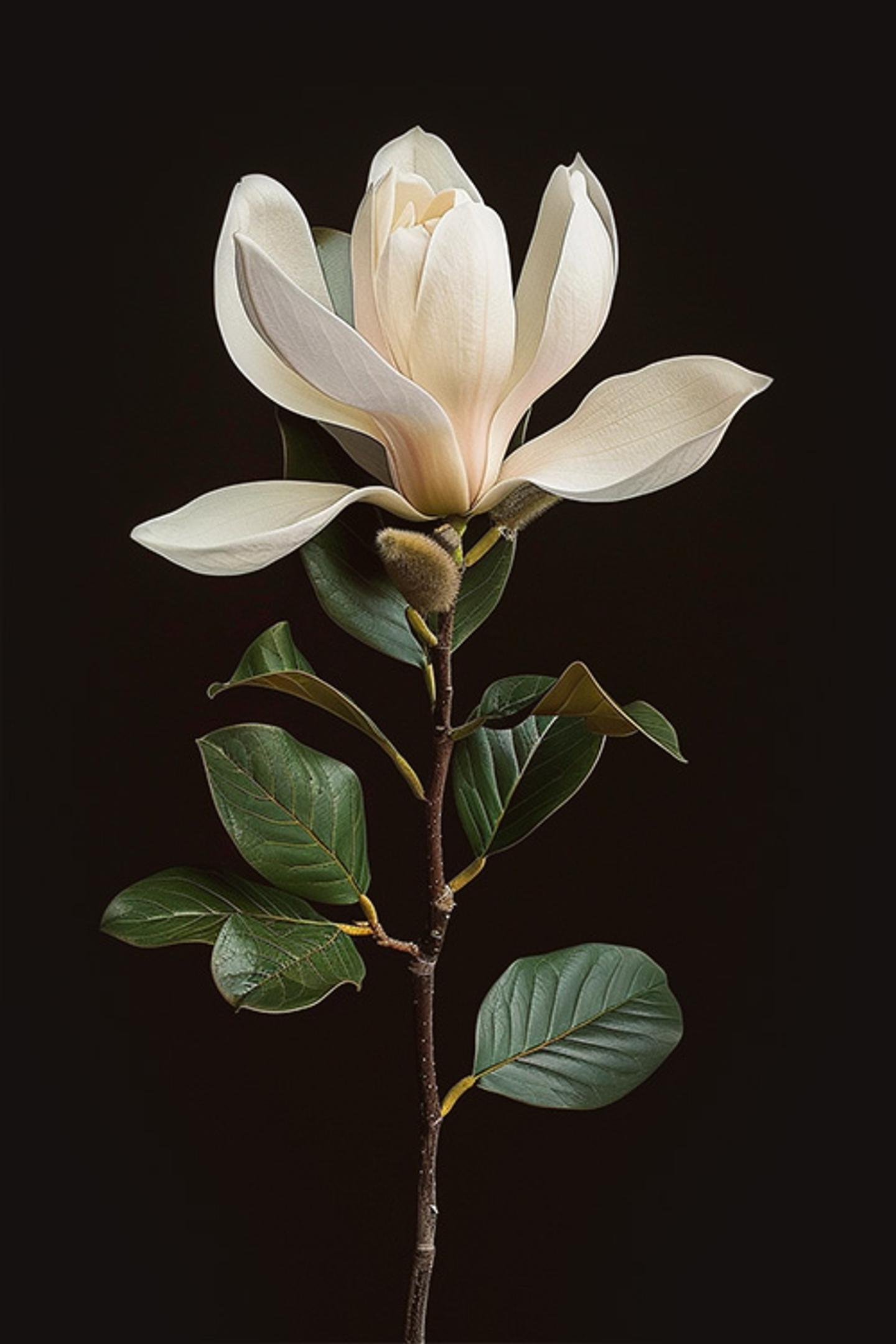
Magnolia
No, we’re not talking about Steel Magnolias, unfortunately. But we are talking about one of the most iconic trees of the American South!

Lily of the Valley
A personal favorite of Audrey Hepburn and featured in many royal weddings – this delicate woodland plant is famous for its sweetly scented, bell-shaped white flowers. Native throughout the cool temperate Northern Hemisphere in Asia and Europe, this pendant bloom has surely made its mark in history.

Lisianthus
Sometimes the simplest of things can become the most elegant…

Lotus
The Nelumbo nucifera, also known as the sacred lotus, water lily, or just plain old lotus—is considered one of the most sacred blooms in our world’s history.

Magnolia
No, we’re not talking about Steel Magnolias, unfortunately. But we are talking about one of the most iconic trees of the American South!
Ready to send beautiful flowers?
Our guided experience helps you send a one-of-a-kind arrangement perfect for every occasion.
Send Flowers